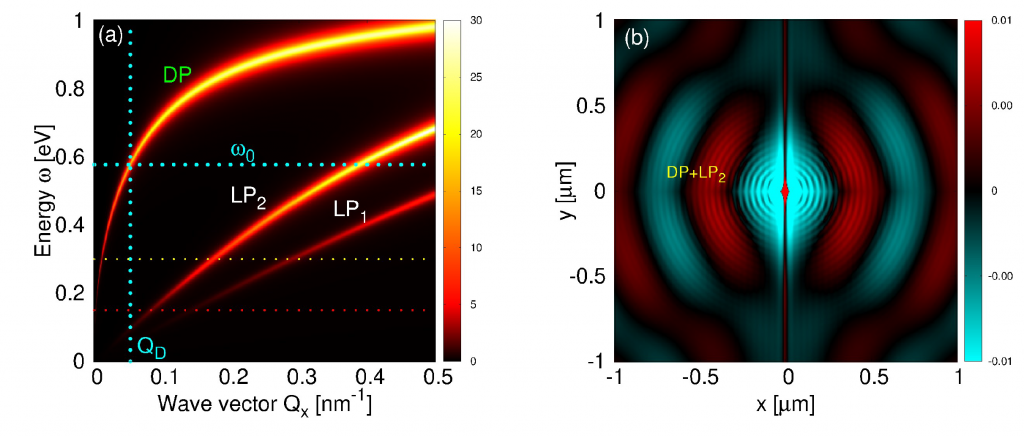This website uses cookies to ensure a better user experience.
To get more information, please read our Cookie Statement.
Optically driven plasmons in graphene/hBN van der Waals heterostructures: simulating s-SNOM measurements
Our colleagues Neven Golenić and Vito Despoja, together with a collaborator from Italy Stefano de Gironcoli, published a paper in Nanophotonics, where they theoretically examined the 2D plasmon excitation efficiency in graphene/hexagonal-boron-nitride (Gr/hBN) composites via silver spherical nanoparticle.
Optically driven plasmons in graphene/hBN van der Waals heterostructures: simulating s-SNOM measurements
Neven Golenić, Stefano de Gironcoli, and Vito Despoja, Nanophotonics (2024).
DOI: doi.org/10.1515/nanoph-2023-0841
Understanding the indirect coupling of (transverse) photons and (longitudinal) 2D plasmons in conducting 2D heterostructures is very important for many applications, such as photonics or optoelectronics. One way to excite a 2D plasmon by light is that the light is first scattered at nanoparticles of subwavelength dimensions and then part of the field that is scattered into the evanescent (near field) region is coupled to plasmons. By changing the composition of the 2D heterostructure, the excitation efficiency of individual plasmons in the 2D heterostructure can be manipulated.
Their research is focused on the efficiency of the excitation of Dirac plasmon (DP) and linear plasmons (LPs) in the gr/hBN composites via silver spherical nanoparticle (Ag-NP) standing next to the composite and is illuminated by monochromatic radiation ω0. The strength of the scattered electric field Esc,vdW carried by the plasmons was studied for different parameters such as the number of Gr layers ‘N’ (in the Gr/hBN composite) or depending on the graphene doping ‘n’, or size ‘R’ and distance ‘h’ of the spherical nanoparticle. It was obtained that for some parameters more than 25% of the incident electric field can be converted into a Dirac plasmon. Also, a very important finding is the possibility of manipulation of the DP and LPs excitation efficiency by changing some of the mentioned parameters. These findings and theoretical tools can be very useful for designing optoelectronic devices in which the conversion of non-radiative to radiative modes (and vice versa) takes place.

Figure 1: (a) The intensities of the surface electromagnetic modes -ReΓindxx in gr(n)/hBN composite for N=3. The dispersion relation of DP and two linear plasmons, LP1 and LP2, can be seen clearly. (b) The corresponding dimensionless scattered electrical field Exsc,vdW(ρ,z=0,ω0) driven by Ag-NP illuminated by x polarised radiation of frequency ω0=300meV, also denoted by the horizontal yellow line in (a). A nanoparticle of radius R=20nm is located at the origin (ρNP=0) and a height of h=30nm. The concentration of graphene doping is n=1014cm-2. One can clearly see LP2 (short wavelength patterns) modulated by the Dirac plasmon (long wave-length patterns).




